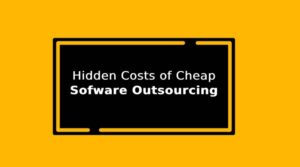As more and more people are relying on WordPress as their content management system, the likelihood of your site being hacked increases—even if you’re running the latest version of WordPress with the most up-to-date security measures in place.
There are always ways around the latest defenses, which is why it’s essential to make sure that you’re implementing all of the security practices necessary to keep your site secure.
Table of Contents
Top 10 Tips to Secure Your WordPress Website from Hackers
These 10-step checklists will guide you through all of these precautions so that you never have to worry about your site getting hacked again!
#1. Opt For Secure Hosting
#2. Mask Your Login URL
#3. Use a Password Manager
#4. Enable Two-Factor Authentication
#5. Use Login Timeouts
#6. Secure Your wp-config.php File
#7. Harden Your Security With a Plugin
#8. Use Plugins to Carry Out Tasks Automatically
#9. Take Steps to Prevent DDoS Attacks
#10. Regularly Check for Rogue Accounts
Let’s brief them out;
Opt For Secure Hosting
When it comes to securing your WordPress site, one of the most important things you can do is choose a secure hosting provider. A good hosting provider will have security measures in place to help protect your site from attacks.
One of the best ways to find a secure hosting provider is to ask around and read reviews from other WordPress users. Once you’ve found a few potential providers, be sure to check out their security features and policies before making your final decision.
A good host will have features like malware scanning, firewalls, and daily backups. They should also offer customer support in case you need help with anything related to securing your site. Another thing to look for when choosing a secure hosting provider is whether or not they are running SSL certificates on their servers.
SSL certificates encrypt data so that no third party can see what you’re sending over the internet, which means hackers won’t be able to steal your information if they attack your site while you’re not looking.
SSL can be either a single-domain, multi-domain, or wildcard SSL certificate. If you want a paid SSL certificate then there are many great options like RapidSSL Wildcard Certificate, Thawte SSL 123, RapidSSL certificate, and GlobalSign SSL certificate. All these SSL certs come with 256-bit encryption.
Mask Your Login URL
One of the most common ways hackers gain access to a WordPress site is by brute-forcing the login page. To prevent this, you can mask your login URL so that it’s not easily guessed. There are a few ways to do this, but one of the simplest is to use a plugin like WPS Hide Login.
After Installing, you can choose a new URL for your login page under Settings > General.
Be sure to choose something that’s difficult to guess, like a random string of numbers and letters. You can also add an extra layer of security by requiring users to enter a CAPTCHA code before they’re able to log in.
Use a Password Manager
A password manager is a software application that helps you create, store, and manage your passwords. While it may seem like an unnecessary step, using a password manager can actually help you keep your site more secure.
Here’s how password managers can help to secure the WordPress site.
- Password managers create strong, unique passwords for each of your accounts.
- They store your passwords in an encrypted format, so even if someone did manage to get their hands on your password manager database, they wouldn’t be able to read your passwords.
- Some password managers will even generate two-factor authentication codes for you, so you don’t have to remember those either.
- Password managers can help you avoid using the same password on multiple sites.
Enable Two-Factor Authentication
Two-factor authentication is an important security measure you should enable on your WordPress site. This will help to protect your site from hackers who may try to gain access to your account. You will need to install a plugin such as Authy or Google Authenticator to enable two-factor authentication.
Once you have installed the plugin, you will need to set up a two-factor authentication code that you will use when logging into your WordPress account. You can find instructions on how to do this by visiting the plugin’s website. Once you have set up two-factor authentication, be sure to test it by logging out of your WordPress account and then trying to log back in.
Also Check: BigCommerce Development Services
Use Login Timeouts
A login timeout is a great way to keep your site secure. By setting a time limit on how long someone can stay logged in, you can make sure that they’re not spending too much time on your site. Plus, if someone does try to hack into your site, they’ll only have a limited amount of time to do so.
Secure Your wp-config.php File
The wp-config.php file is one of the most important files in your WordPress installation. This file contains your database connection information and other sensitive settings. Hackers can use this file to gain access to your website, so it’s important to secure it.
- You can Secure your wp-config.php file by changing its location so that hackers can’t find it in its default location.
- Set the file permissions to 600 so that only true owners can edit the wp-config file. To change the file permission of wp-config, select the file and then choose the option ‘Permission’.

- Include the following lines in the .htaccess file to prevent hackers from loading the wp-config file directly from the browser.
# protect wpconfig.php
<files wp-config.php>
order allow,deny
deny from all
</files>
Harden Your Security With a Plugin
A security plugin is a must-have for any WordPress site. It will help to secure your site from hackers and other malicious activity. There are many great security plugins available, but we recommend using the iThemes Security plugin. This plugin is easy to use and provides a variety of features to help keep your site safe.
Use Plugins to Carry Out Tasks Automatically
One of the most important things you can do to secure your WordPress site is to check for rogue user accounts regularly. Rogue user accounts are unauthorized user accounts that have been created without your knowledge or permission. These accounts can be used to gain access to your site and wreak havoc.
To find out if you have any rogue user accounts, go to the Users tab in your WordPress dashboard and click on All Users. If you see any users that you don’t recognize, delete them immediately.
Take Steps to Prevent DDoS Attacks
Keep Your WordPress Site Updated
Outdated software is one of the most common ways hackers gain access to a site. Use a strong password and never reuse passwords. A good password should be at least 12 characters long and include a mix of uppercase and lowercase letters, numbers, and symbols.
Use A Security Plugin
There are many great security plugins available for WordPress, such as Wordfence Security and iThemes Security. These plugins can help you monitor and block suspicious login attempts so that even if a hacker gains access to your site, they won’t be able to do much damage.
Always keep up with updates for any plugins or themes you’re using on your site
Update all plug-ins before you update WordPress itself in order to avoid potential conflicts with newer versions of those plug-ins or themes that could leave your site vulnerable.
Regularly Check for Rogue Accounts
Checking for rogue accounts is one of the most important steps you can take to secure your WordPress site. By regularly checking for rogue accounts, you can help prevent hackers from gaining access to your site.
Follow these steps to check rogue accounts.
- Login to your WordPress site as an administrator.
- Go to the Users tab and click on the Add New button.
- Enter the username and email address of the new user.
- Select a strong password for the new user.
- Click on the Add New User button.
- Repeat steps 2-5 for each new user you create.
Conclusion
In this blog post, we have covered the 10-Step Checklist for Securing your WordPress Site from Hackers. This checklist is the result of the extensive research we did to find out how to hack a WordPress site.
If you run a WordPress site and are worried about it getting hacked, we hope that this checklist will help you prevent your site from getting hacked.




















+ There are no comments
Add yours